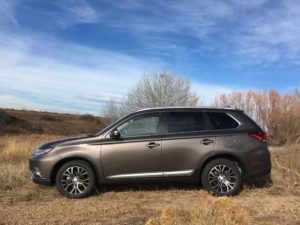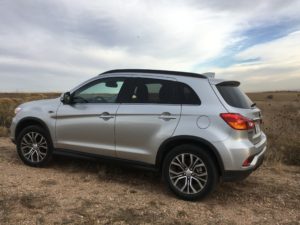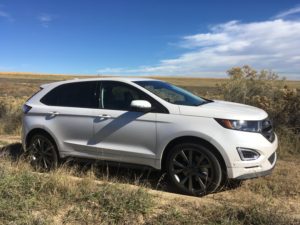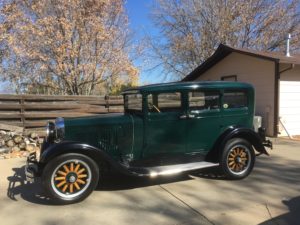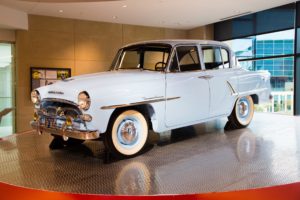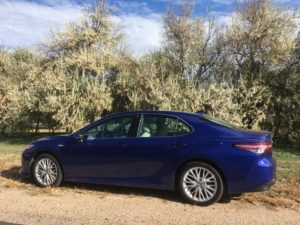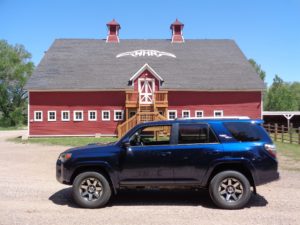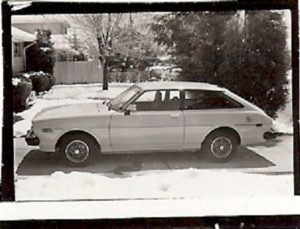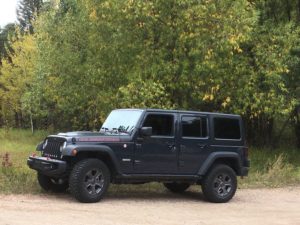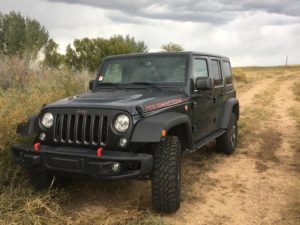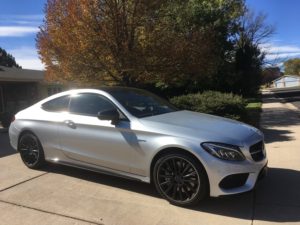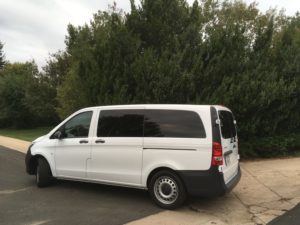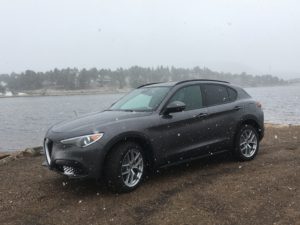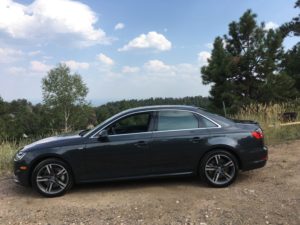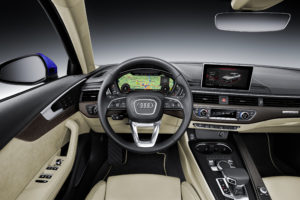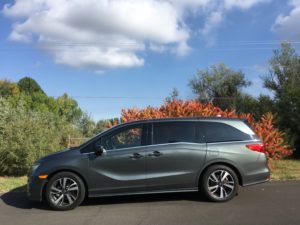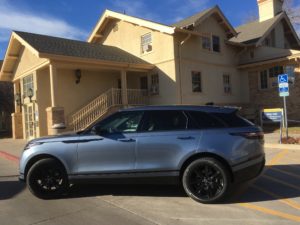
When I walked out and saw the 2018 Range Rover Velar in my driveway, it seemed much longer than I had imagined it might be. It is the newest luxury midsize sport-utility vehicle on the U.S. market.
For it to exceed my expectations was of no surprise, for Land Rover, builder of Range Rover products, does nothing in a small way.
Sizewise, the Velar is third in line behind the full-size Range Rover and Range Rover Sport. The Velar at 113 inches is only 2 inches shorter in wheelbase than the others; its overall length of 189 inches compares with 197 for Range Rover and 192 for the RR Sport.
The Velar, larger than the Range Rover Evoque (a compact), has curb weight of around 4,225 pounds. That’s 500 pounds heavier than the Evoque, and of at least that much lighter than the heavier Sport and Range Rover.
Among competitors for the new model are Lexus RX350, BMW X5, Volvo XC90, Cadillac XT5, Lincoln MKX and others.
It carried Jan and me, along with Dick and Bernice Muller to Sterling for the 60th wedding anniversary party for Duane and Millie Muller at the Logan County Heritage Center. Duane and I are cousins, born three weeks apart at Wray many years ago.
The highway drive along U.S. 34 to Wiggins, then I-76 to Sterling, brought out the best of fuel mileage for the diesel-powered Velar – averaging 30 miles per gallon there and back.
The high-mileage reading from the 2.0-liter, 4-cylinder turbodiesel engine will decline in stop-and-go maneuvers, and a power-lag pause occurs at lower speeds before the turbo kicks in. The diesel delivers 317 lb.-ft. of torque and 180 horsepower. Two gas-engine options for the Velar are a turbocharged 2.0-liter, 4-cylinder of 247-hp and a supercharged 3.0-liter V-6 of 380-hp. All three are tied to an 8-speed automatic transmission and all-wheel drive.

The Velar I drove is the R-Dynamic HSE edition, finished in byron blue exterior and light interior. Velar was the identity used on Range Rover prototypes before Land Rover launched it into actual production in 1970. The Velar is built in Solihull, United Kingdom.
In Range Rover tradition, the Velar rides smoothly and quietly. It is equipped with a coil-spring suspension. Its gloss-black-finished 20-inch spoked wheels are a standout, with Pirelli Scorpion 255/50R20 tires.
Land Rover’s lane-keeping assist gently nudges the SUV back into its driving lane when it wanders near the lane-divider stripe on the highway; it is also equipped with emergency brake assist. The lane-keeping system wasn’t as noticeably effective as was that of the Audi Q7 several months ago.
The Velar shows a clamshell hood and straight body sides, broken by popout door handles which retract when the car is locked or shifted into gear.
Highlighting the interior are white Windsor leather seating and the Touch Pro Duo 10-inch screens for infotainment, climate and driving modes of comfort or dynamic, with terrain choices, too. Previously, a dial shifter (like the automatic transmission shifter) was provided for terrain settings; this new one is selected on one of the two touchscreens. The upper screen offers controls for navigation, phone and media, while the lower screen controls climate, seat functions and the terrain response settings.
The Velar offers a large rear cargo space of 34.4 cubic feet, with adjustable tiedown rails on each side. Its tailgate can be automatically opened by swinging a foot beneath the rear of the vehicle.
From a base price of $69,100, the Velar sticker price jumped to $75,415 with addition of heated windshield and steering wheel, four-zone climate control, surround-camera, remote release for rear seat, Meridian surround sound and ebony black headliner.
Among standard items are rearview camera, park assist, Bluetooth connectivity and streaming, push-button start, heated rear window, automatic headlights and headlight leveling.
